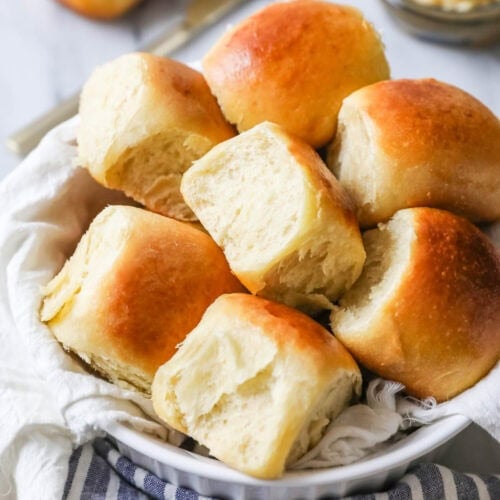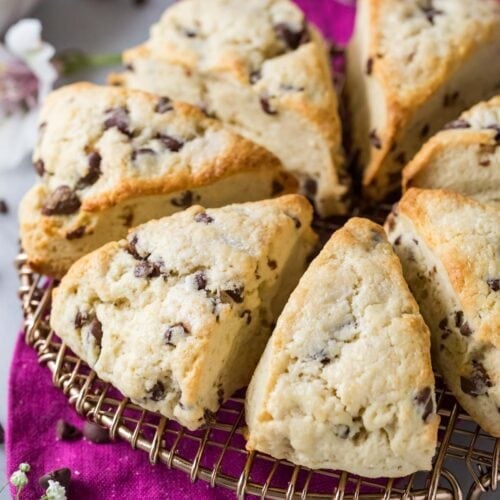Buttery, flaky, and next-level flavorful, my sourdough pie crust recipe can be made with discard or active starter. It comes together quickly and easily (use a pastry cutter or a food processor) and works equally well for sweet and savory pie recipes.

Why You’ll Love This Recipe
- Makes one pie crust but easily doubles for two, which you’ll need if you use this recipe for my easy apple pie(coming soon!).
- Very versatile crust that’s so easy to handle. You can use it for so many recipes, from my classic chicken pot pie (coming soon), apple dumplings, or really ANY recipe that uses a pie crust, even pie crust cookies.
- INCREDIBLE depth of flavor. The sourdough discard works similarly to the sour cream in my easy pie crust recipe, adding wonderful flavor (without being overwhelming).
- Can be made with whatever tools you have in your kitchen. My preference is to use a food processor (does the job quickly, easily, with less mess, and results in a more uniform dough), but a pastry cutter works fine, too. Or you can grate the butter, like I do with my biscuits!
Just in time for Thanksgiving pie baking, my sourdough pie crust incorporates sourdough discard (or starter, see my notes below) into pie dough for an incredibly flavorful, flaky crust.
What You Need

- Sourdough discard. If you are maintaining a sourdough starter, you’ll have some of this in your kitchen. If you don’t, check out my post on how to make a sourdough starter.
- Sugar. I don’t recommend skipping the sugar, even if you use this recipe for a savory recipe like quiche lorraine; the crust just doesn’t taste as good. If you’d like, you can substitute the granulated sugar for coconut sugar (the resulting sourdough pie crust will be darker in color though).
- Flour. Regular all-purpose flour works just fine here, or use a heritage grain flour (I like Sunrise Flour Mill flour a lot for my sourdough recipes). You’ll also need some for dusting your surface when rolling out your dough!
- Butter. Unlike many of my recipes, I like to use salted butter here. I have a whole post on using salted vs unsalted butter if you’d like to read more about this.
- Salt. For flavor! If you use unsalted butter, you will need to increase the salt in the recipe to ¾ teaspoon.
SAM’S TIP: Brushing egg wash (1 tablespoon water or milk + 1 beaten egg) over your pie crust before it goes in the oven will encourage a golden brown exterior (and gives some pretty sparkling sugar a way to stick, if you want to add that!). If you have an egg allergy (or are just out of eggs), you can skip this or brush the crust with a bit of heavy cream (it won’t brown as much though).
This is just an overview of the ingredients I used and why. For the full recipe please scroll down to the bottom of the post!
How to Make Sourdough Pie Crust
This pie crust can be made with a pastry cutter or a food processor. Personally, I like using a food processor (it’s just easier!), but either will work fine. Here’s how you do it (both ways)!


Combine the dry ingredients in a bowl or the basin of a food processor. Scatter the butter (remember it should be very cold and cubed) overtop, then work it into the dough until the butter is in pea-sized pieces.


Add the sourdough starter, then stir or pulse (pulse in 1-second intervals — don’t just blitz it without pausing or it won’t combine properly) until you have a shaggy dough that starts to cling to itself. If you can’t get the dough together, add ice water a teaspoon at a time until it comes together.

Turn the dough out onto a lightly floured surface and form into a cohesive disc with your hands. If you used a pastry cutter, the dough will be more shaggy and dry and you’ll have to work it together with your hands. Work it into a smooth, flat disc.
Wrap the dough in plastic and place in the fridge to chill for at least an hour or up to 3 days.

Roll into a 12″ circle on a lightly floured surface. Make sure to move the dough frequently as you roll it out and add flour (on top of and beneath the dough) as needed during this process so it doesn’t stick to your counter.

Transfer the crust to your pie plate (tip: roll it onto your rolling pin for easy transfer!) and crimp/flute the edges as desired. You can use this recipe for a blind baked pie crust or fill it right away–just follow whatever your recipe says.
SAM’S TIP: Want to get fancy? I have a tutorial on how to make a lattice pie crust if you want a step-by-step guide. Note: you will need to double this recipe for a lattice crust.

Frequently Asked Questions
Yes! The dough can be frozen for several months; simply wrap it tightly in plastic wrap and place in the freezer until needed. The night before you plan to use it, remove the dough from the freezer and place in the fridge to thaw overnight.
Yes, but not in the way you may think. Sourdough pie crust isn’t sour like sourdough bread, but it does have an amazing depth of flavor and slight tang that you don’t get from a traditional pie crust. In my opinion, it’s better!
Yes! Just make sure you stir the bubbly starter down before you measure it in your measuring cup, that way you have an accurate measurement. You won’t need to worry about this if you are measuring with weights (just another reason to learn how to use a kitchen scale 😉).
This crust fits neatly into a 9-10″ pie crust. You can use it absolutely anywhere you would use a traditional pie crust. I like it for my easy apple pie, lemon meringue pie, pumpkin pie, chocolate pie, French silk pie, pecan pie, blueberry pie, or any of my pie recipes that use a classic pie crust. It can be used for blind baking or used for a lattice topping, or for non-traditional pie recipes that call for pie crust (like apple turnovers, apple dumplings, hand pies, or homemade strawberry pop tarts). The options are endless!

Enjoy!
Let’s bake together! Subscribe to my newsletter to be notified of all the newest recipes, and find my free recipe tutorials on YouTube 💜

Sourdough Pie Crust
Ingredients
- 1 ¼ cups (156 g) all-purpose flour
- 1 Tablespoon granulated sugar
- ½ teaspoon table salt
- 8 Tablespoons (113 g) salted butter very cold, cubed
- ½ cup (110 g) sourdough discard cold
- Ice water as needed
Recommended Equipment
Instructions
- If using a pastry cutter: Whisk together the flour, sugar, and salt in a medium-sized mixing bowl. Using a pastry cutter, cut in butter until it is well distributed into pea-sized pieces. Add discard and continue to stir until dough is shaggy and beginning to cling together (if it won’t cling together, add ice water a teaspoon at a time until it does).1 ¼ cups (156 g) all-purpose flour, 1 Tablespoon granulated sugar, ½ teaspoon table salt, 8 Tablespoons (113 g) salted butter, ½ cup (110 g) sourdough discard, Ice water
- If using a food processor: Briefly pulse together flour, sugar, and salt. Scatter cubed butter over the flour mix and pulse several times until butter is well distributed into pea-sized pieces. Pour discard into the food processor and pulse in 1-second intervals until dough begins to cling together (if needed, add a splash of ice water, 1 teaspoon at a time until dough clings together).1 ¼ cups (156 g) all-purpose flour, 1 Tablespoon granulated sugar, ½ teaspoon table salt, 8 Tablespoons (113 g) salted butter, ½ cup (110 g) sourdough discard, Ice water
- Turn dough onto a lightly floured surface and use your hands to form into a disc. If you used a pastry cutter, the dough will be a bit dry/shaggy and you will likely need to use your hands to work the dough together so that it clings to itself.
- Wrap tightly in plastic wrap and refrigerate at least one hour before using.
- Once chilled, remove the dough from the refrigerator and transfer to a clean, lightly floured surface.
- Use a lightly floured rolling pin to roll into a 12” (30cm) circle, adding flour beneath as needed to keep from sticking. Add flour as needed and be sure to lift the pie dough and add flour beneath it while rolling to keep from sticking.
- Transfer to a pie plate, cut, crimp, or flute the edges of your excess crust, and proceed with filling or blind baking as per your pie recipe’s instructions.
Notes
Storing
Dough may be made and stored, tightly wrapped, in the refrigerator for up to 3 days before using. It may also be frozen for up to 3 or 4 months. Thaw overnight in the refrigerator before using.Sourdough
Active starter will also work in this recipe, just make sure to stir it down before measuring.Nutrition
Nutritional information is based on third-party calculations and should be considered an estimate only. Actual nutritional content will vary based upon brands used, measuring methods, cooking method, portion sizes, and more.










Seva
What would you recommend: a pastry cutter or blender? I have both and would like your opinion!!
Sam Merritt
A pastry cutter in this situation. 🙂
Seva
What about if I want to do lattice? Should I make an extra batch?
Sam Merritt
I would make one pie crust for the bottom and one to make the lattice on top. 🙂
Kristi
Excellent recipe!
Sharon
Hi, Sam!! I am wanting to try your sourdough pie crust but the crust needs to be precooked and cooled before filling. Can I do this with the sourdough or crust recipe? If so, what would I cook it on and for how long?
Thank you for your help!
Sam
Hi Sharon! Yes you can absolutely do this, follow my instructions on how to blind bake a pie crust, everything there applies for this crust, too. I hope this helps, and I hope you love the crust!
Sharon
Thank you, Sam!!! I have had more new adventures cooking with you and they have all been positive and the outcome….DELICIOUS!!
Sharon
Hi, Sam! I just wanted to confirm with you…if making the pot pie, you would need to double the pie crust recipe, right? Thank you for all your great help and recipes!!!
Sam
Hi Sharon! That is correct! You will need 2 pie crusts for a pot pie. 🙂
Sharon Akiyama
Your pot pie and pie crust recipes are WONDERFUL and DELICIOUS!! Thank you for your response. I made two crusts but I am such a BAD pie crust maker and you’re video makes it look so easy. The crust is so good, that I will have to try to make pies, now! 🤣 Hopefully, I will get better with practice!! Thank you, Sam! ❤️
Sam
I’m so glad you enjoyed it so much, Sharon! Practice will definitely help. I still struggle to roll out circles for my pie crusts, but as long as it tastes good that is all that matters! 🙂
Carrie
This recipe turned out just perfect for our pumpkin pie. We loved the taste and texture.
Thank you for sharing.
Sam
I’m so glad everyone enjoyed it so much, Carrie! 🙂